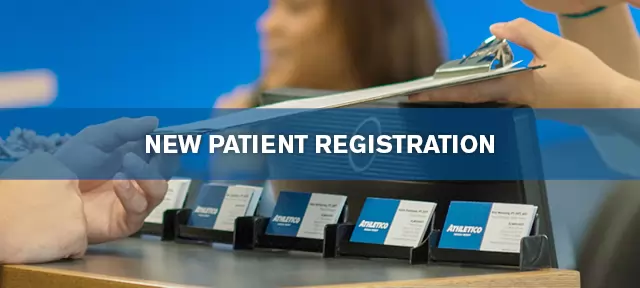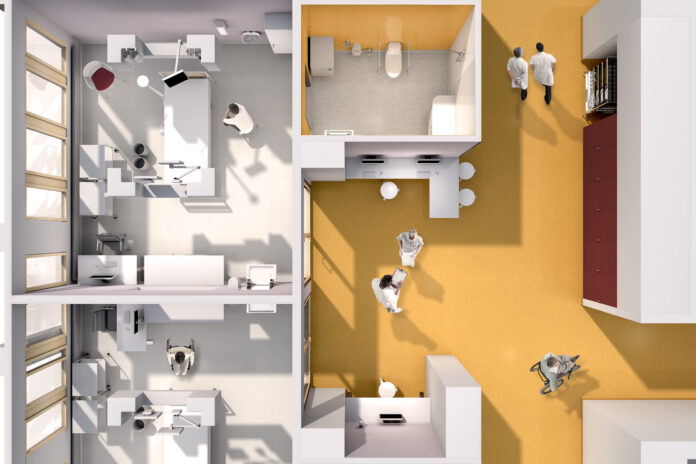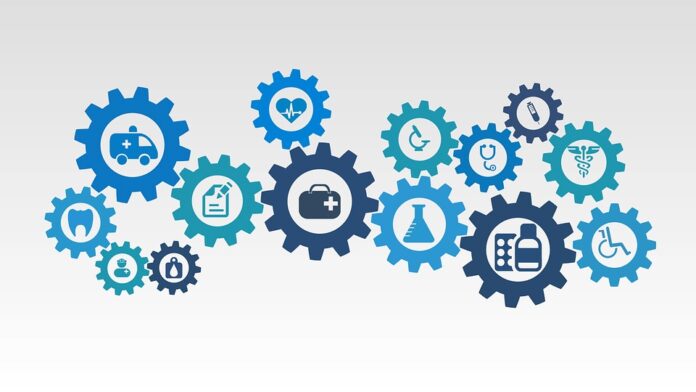COVID-19 steered the administrative workforce towards adopting creative and more result-focused strategies for managing day-to-day operations.
While the shift is the right step, maintaining hospital functioning at its optimal capacity is not a one-dimensional problem. More patients are not the problem; how they are handled leaves much to be desired.
Patients often complain against the administrative department because they are either neglected, not attended to, or proper procedures are not followed to optimize patient flow.
With that in mind, here are a few tips to optimize operations and increase patient flow.
1. Get Digital – Create an Online Portal

Patient Registrations are extensive procedures with resources to engage and paperwork to fill. They are time-consuming and cause unnecessary interruptions for the medical staff on duty.
An online portal accessible through a website or a mobile app can be helpful in this regard. To ensure all patients are attended to, an online portal can speed up the registration process.
2. Establish a Patient Flow Team

Dedicating a team exclusively to monitor, study and enhance the Patient Flow is an intelligent investment.
This might appear like a managerial assignment, but maintaining and managing patient workflow requires keen insight and vigilance. Hospitals should support their teams with relevant education and tools.
Regarding education, encouraging the staff to register for online degrees like MHA Online Programs can be very beneficial. With a team unburdened by the imposing administrative assignments, a hospital can identify, study and monitor each influencing factor more readily and cautiously.
Moreover, equipping the team with the right tools and technologies, such as data analytics, RLTS, and centralized databases, allows a hospital to make timely and necessary changes and improvements that promise to increase Patient Flow.
3. Dedicate Resources for Outreach

Looking at this from a corporate lens, increasing workflow for a hospital is the same as expanding the audience for your product. To do that, you must stay connected with people consistently.
With platforms like Facebook and Instagram and modern advertising techniques like Email Marketing, hospitals can stay connected with patients at all times. Offering perks like easy scheduling and reminders of free visits and consultations through messaging campaigns and emails is an excellent strategy.
Furthermore, offering the right services and being responsive to requests is appealing to patients, who are always seeking and expecting vigilant promptness from hospitals and medical facilities.
4. Strengthen Inter-Departmental Collaboration
After an initial diagnosis, a doctor might prescribe an X-ray to a patient, requiring them to move to the Radiology section or the pharmacy for medicine.
The hospital must provide an updated status report regarding the patient’s whereabouts. This also means the status is updated within the medical record and concerned departments to allow seamless handling of the patients.
5. Fortify the Non-Clinical Services

Since non-clinical services contribute to the patient’s positive (or negative) experience at a hospital, hospitals must constantly monitor their performance.
Hiring relevant staff, offering them the right training, and equipping them with the tools necessary to ensure they can tackle daily tasks is imperative for improving the performance and efficiency of the personnel involved with the patients.
6. Improve on Cycle-Time Measurements
A cycle time measures the length of time a process(s) of the hospital takes to complete. For instance, the amount of time it took to register or discharge a patient or the amount of time it took to administer medication or service.
Using dedicated software and hardware, such as RTLS, can collect real-time data, helping the management make real-time changes and observe progress. This can prove helpful in identifying areas that need improvements and making the overall system quicker and more optimized.
7. Improve the Layout of The Hospital

The hospital’s building is as important as the services offered within it. The key to increasing workflow while saving time is to make navigation around the hospital easy.
A mobile app with a real-time GPS-enabled layout might also be a handy tool to facilitate the patients. The quicker the navigation, the fewer time delays and missed appointments while increasing patient flow.
Furthermore, stand-up stations and Centralized Electronic Health Record (EHR) systems can be a helpful addition to the hospital’s building. Also, patients’ rooms must have direct access to basic resources to avoid delays.
8. Regulate Ingress and Egress of Patients scheduled with Elective Procedures
With resources always in a crunch, it is necessary to time procedures as carefully as possible. Hospitals can schedule elective procedures more cautiously to lessen the burden on the resources.
The discharge of patients and admission of critical patients can be balanced and carefully planned. Management must gauge the available resources and cross-check them with the planned and ongoing procedure to avoid capacity crunches.
9. Ingrain Accountability and Values in the Workforce
Hospitals can only be as good as those operating them, so they must ensure that their values revolve around offering the best healthcare to the patient.
Increasing patient flow is only possible if your medical institution is built on credibility and trustworthiness. Your workforce must be trained, equipped, and ingrained with a sense of serving the patients to ensure they feel well-attended.
10. Encourage Positive Reviews

The first step regarding this tip is offering your patients the best possible medical care. A survey indicated that 72 percent of patients claimed that reviews they read online and reputation were the basis of selecting a healthcare provider.
Conclusion
A hospital can and must maintain a thorough online presence and keep a vigilant eye on negative reviews and feedback. They must also promptly reply to the complaints and issues raised within a negative review to build trust and credibility and increase patient flow.
The tips we have highlighted above should help most medical institutions optimize patient flow while improving and streamlining their day-to-day operations, but there is always room for error.
Every medical institution needs a qualified and experienced workforce to reduce problems and ensure patients leave happy. This includes doctors, nurses, and administrative staff who are motivated and vigilant on duty.
Moreover, the managerial staff should ensure their team is not overburdened with tasks, as this can lead to more severe problems for the patient and the hospital.









